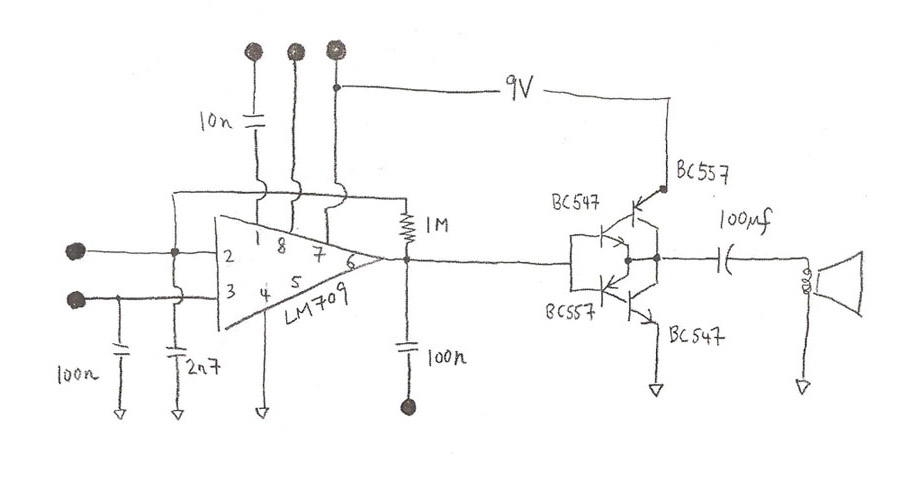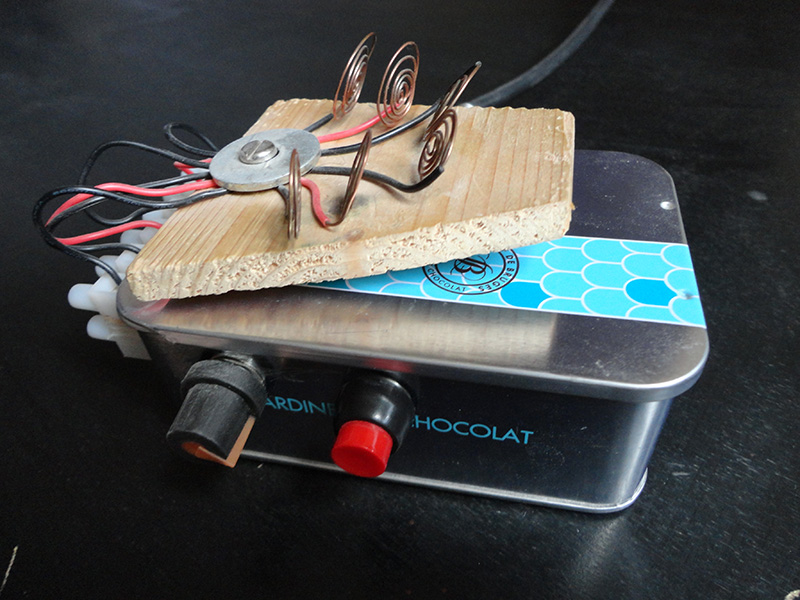Interaction 1 (2012)
For crackle box and interactive system
Duration: about 11 minutes
Tech: portable mono amplifier with subwoofer
score (jpg, 2Mb)
amplitude mapping example (pdf, 90Kb)
frequency mapping example (pdf, 60Kb)
Interaction 1 is a work which uses the output of a crackle box (1) to drive a computer. All the information the system needs in performance comes from the analysis of the crackle box's analogic output, and there is no performer's intervention on the computer. This research falls within the field of machine listening systems. The approach I'm exploring is concerned with composing sets of relationships between the acoustic/analogic source and the modules generating the digital sound. The main goal is to focus on the essentiality of the gestures in the electronic performance, without renouncing to a constructive compositonal practice. Important elements for the construction of the relationships are how the parameters extracted from the source are mapped to the digital synthetizers, how the relationships evolve, and what is the condition activating them.
In this work, a guideline is the degree of influence the source has on the synthetic sound. The piece starts with the crackle box controlling harmonic sounds defined a priori, and gradually starts to affect the synthesis until all the pitch material and the durations are related to what happens or happened in performance. The second section is a mixture of predefined behavior and other forms of behavior that emerge from the performance; this section has no linear development. In the third section the relational aspect is brought to its bare minimal terms: the gestures leave only a small trace affecting the beatings in the upper and lower register.
The crackle box was chosen as input source for this work either for its tactile sensitivity or for its meaningfulness. Indeed, the circuit relies on an integrated circuit which had a short lived commercial use because it was instable and, according to the correct engineering, flawed. The crackle box uses this flaw to show new unexpected directions. This interactive system aims to expand these directions, give them further acoustic interest, showing to what extent incorrect engineering can be re-contextualized into constructive systems.
(1) The crackle box is a circuit designed by Michel Waisvisz in 1974 at STEIM. It basically consists of an operational amplifier (LM709) whose connections are brought on the control surface, and left open. The user, touching them, activates the circuit using the body as conductor. The sounds produced are related to the resistance of the body, and the amount of pressure applied on the connectors.


